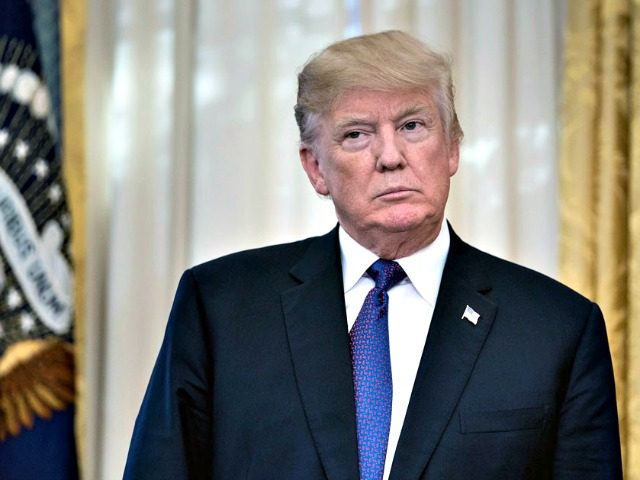Elections have consequences, and in the energy and environmental policy areas, the consequences resulting from the election of Donald Trump have been profound.
When it comes to being president, ideas and vision are in many cases just as important as the policies implemented. In this regard, there has been a radical shift in the goal driving energy policy since Barack Obama left the White House. Under Trump, energy policies are no longer formulated based on the false narrative humans’ fossil-fuel use is causing dangerous climate change.
Trump views climate change as non-threat to the prosperity and health of U.S. residents and believes the climate policies imposed by Obama are threats to the country’s national and energy security. Trump also ran his campaign, and thus far his administration, with the belief those policies have been hindering energy development and job growth. Under Trump, U.S. energy policy is guided by the overarching goal of promoting American energy dominance, a position reflected throughout the Trump administration’s America First Energy Plan.
The Heartland Institute assembled an Action Plan for the Trump administration consisting of 34 actions and policies it believes will help, in Trump’s words, “make America great again.” Trump—with Congress’ help, in some instances—has already accomplished in whole or in part eight of the 13 energy and environment recommendations in the Action Plan. For instance, Trump withdrew the United States from the Paris climate agreement and rescinded the Clean Power Plan—thereby partially adopting recommendations two and five on Heartland’s list. Trump also approved the Keystone XL Pipeline (recommendation 3), and on November 20, the Nebraska Public Service Commission likewise approved the project—the final major regulatory hurdle needed for the expansion to begin.
With Scott Pruitt at the helm of Trump’s Environmental Protection Agency (EPA), EPA has ended its use of sue-and-settle agreements, which radical environmentalists and collaborators within EPA have relied on for years to shape energy and environmental policy without legislative oversight and outside of the normal regulatory process. Trump has also cleared Obama holdovers from EPA science advisory committees and issued a directive to ensure advisers serving on EPA Federal Advisory Committees are not receiving EPA grants and have no other conflicts of interest. Many of these positions at EPA and other agencies are now being filled with Heartland policy advisors. Additionally, Trump has dramatically reduced funding for climate programs. (The previous three actions accomplish Action Plan recommendations 10, 11, and 12, in whole or in part.)
As a candidate for president, Trump argued the massive regulatory state headquartered in Washington, DC was one of the key factors destroying jobs, restricting economic growth, and preventing America from becoming great again. To remedy this problem, Trump has committed to rescinding two regulations for every new regulation enacted, a promise he has kept since first entering the White House. In his first 11 months in office, Trump rolled back 22 regulations for every rule enacted.
Neomi Rao, director of the Office of Information and Regulatory Affairs, reports the administration has thus far formally revoked 67 rules, blocked 635 regulations that were being developed, placed 244 proposed regulations on “inactive” status, and placed a hold on more than 700 regulations. According to White House staff, the regulations the Trump administration has rescinded completely have saved the economy more than $8.1 billion in regulatory costs over their lifetime, or about $570 million per year.
Among the climate and energy policies Trump has changed is the removal of “climate change” as a threat that must be accounted for in the National Security Strategy document. With Congress’ help, Trump also rescinded regulations that would have virtually halted many coal mining operations; withdrew federal regulations on fracking and methane emissions on federal and tribal lands; and opened federal lands to new oil, gas, and coal leases, including previously closed areas on the U.S. outer-continental shelf.
Trump’s other environmental accomplishments include stopping the implementation of the Waters of the United States rule (recommendation 6 on Heartland’s Action Plan)—which had already been placed on hold by federal courts—and reducing the size and changing the management of two enormous national monuments in Utah.
Trump still has much more to accomplish, but any fair assessment conducted by supporters of reasonable energy policies would consider his first-year achievements a tremendous start.
If the stock market, job growth, unemployment decline, business investment, and consumer confidence are any indication, Trump is well on his way to making America great again, and his climate, energy, and environment policy changes are playing no small part in that.
H. Sterling Burnett, Ph.D. (hburnett@heartland.org) is a senior fellow on energy and the environment at The Heartland Institute, a nonpartisan, nonprofit research center headquartered in Arlington Heights, Illinois.

COMMENTS
Please let us know if you're having issues with commenting.